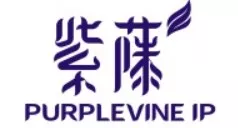Currently, China leads the game in photovoltaic manufacturing. With the rapid growth of global demand for photovoltaic modules, there has been a sharp increase in demand for manufacturing equipment, leading to fierce competition among equipment manufacturers. Therefore, we dived into the industry's patent landscape and will use a case to further investigate the characteristics of utility model patents in China.
Case background
We searched for battery preparation process related equipment patents by using the IPC "H01L31/18" (Processes or apparatus specially adapted for the manufacture or treatment of these devices or of parts thereof [2006.01]) and found that there were three cases of patent infringement lawsuits in China:
- CN101973160B An angle-adjustable printing screen and its angle adjustment device;
- CN201616448U A solar silicon wafer laser scribing shading device; and
- CN210628335U A silicon wafer cleaning device.
All three lawsuits occurred after 2020 and involved screen printing equipment, laser cutting equipment, and silicon wafer cleaning equipment.
We will focus on the third patent and discuss the characteristics of utility model patents in this article.
Case Introduction
The application date of the involved patent (CN210628335U) was November 20, 2019, and it was granted on May 26, 2020. Upon inquiry, it was found that there is also an invention patent (CN201911139288.X) filed on the same day, which is still in its substantive examination stage.
Equipment automation and cost savings are the most critical factors to winning the competition in the photovoltaic industry. The involved patent provides such benefits to its users. It relates to a silicon wafer cleaning device, which is applied in solar cells' texturing and cleaning process. The device has the following characteristics:
- considering that texturing and cleaning may include multiple processes, which are completed in different cleaning tanks, the transmission component of the invention allows the silicon wafer to be freely transferred between different cleaning processes;
- the cleaning tank uses a bubbling device to allow the cleaning solution spreads evenly;
- an isolation component is used to connect or separate the internal space and external space of the structure to reduce the impact of different cleaning solutions interfering with the silicon wafer;
- the cleaning tank includes a main cleaning tank and a sub-cleaning tank, which are connected by a connecting part to reduce the total amount of liquid used, save costs, and reduce the overall volume of the components.
On June 17, 2020, the patentee requested the China National Intellectual Property Administration to issue an evaluation report on the utility model patent right. The China National Intellectual Property Administration issued an evaluation report on July 22, 2020, determining that claims 1-7 do not meet the inventive step requirement, whereas claims 8-10 meet the requirement.
On November 3, 2020, the patentee filed a patent infringement lawsuit with the Nanjing Intermediate People's Court of Jiangsu Province, accusing Wuxi Kingenious Technology Co., Ltd. and Trina Solar Co., Ltd. (Suqian) of infringing its utility model patent right. The court made a ruling on November 25, 2020, stating that:
The plaintiff brought Trina Solar Co., Ltd. (Suqian) as a co-defendant to this court and then withdrew the lawsuit against it and waived the "stop infringement and compensate for losses" claim, which showed an intention to make its case cross-jurisdictional, and violated the principle of good faith that civil litigation should follow. The case was transferred to the Suzhou Intermediate People's Court of Jiangsu Province.
After the lawsuit was filed, the relevant interested parties launched four invalidation attempts, and the most recent invalidation decision was made on January 13, 2023. The patentee added some technical features of claim 8 to independent claim 1 in the first and second invalidation attempts. The reexamination and invalidation departments maintained the patent right based on this modification in all four invalidation attempts.
Case analysis
We need to pay attention to the features of utility model patents in the litigation and invalidation proceedings of this case, which are summarized as follows:
The dual-application system
The same-day application refers to filing an invention patent application and a utility model patent application by the applicant for the same technical solution at the same time. If the utility model patent right obtained first has not expired, and the applicant declares to waive the utility model patent right, the invention patent right can be granted.
The review period for utility model patent applications in China is about 6 months. The patent, in this case, is a utility model patent, which was granted on May 26, 2020, and used to file a patent infringement lawsuit on November 3, 2020. For industries with rapidly evolving technology, utility model patents can be an effective and flexible means to restrict competitors. However, bearing in mind that the utility model patents have a protection period of only 10 years. If the invention patent applied for on the same day is subsequently granted, the corresponding technical solution can obtain a protection period of 20 years.
Utility Model Evaluation Reports
In China, utility model patents are subject to formality examination rather than substantive examination. Still, any interested party can request the Patent Office to issue an evaluation report on the patent right of the utility model. Article 57 of the "Implementing Regulations of the Patent Law of the People's Republic of China" stipulates that the State Council's patent administrative department shall issue a patent right evaluation report within 2 months of receiving a request for a patent right evaluation report.
In an infringement lawsuit involving a utility model patent, the plaintiff can proactively submit a patent right evaluation report, which can be used as evidence and referenced by the court to determine the stability of the patent right to decide whether to suspend relevant invalidation procedures raised by the accused infringer. The court may also request the plaintiff to submit a patent right evaluation report during the litigation process. The consequences of refusing to submit a patent right evaluation report are that the court may rule to suspend the litigation or order the plaintiff to bear possible adverse consequences. However, a patent right evaluation report is not a necessary condition for filing a case, and even if the patent right is evaluated as lacking novelty or inventive steps in the patent right evaluation report, the court cannot legally deny its patentee status as long as the patent right is not invalidated.
Given that a patent right evaluation report does not have the effect of overturning a patent right, in specific cases, the evaluation report should be objectively assessed. In this case, the evaluation report incorrectly identified the feature "The transmission component of the invention allows the silicon wafer to be arbitrarily transferred between different cleaning process mechanisms, as multiple cleaning processes may be involved and completed in different cleaning tanks," was disclosed in the prior art. Based on this fact, it incorrectly determined that independent claim 1 lacked inventive steps. When the invalidation request was filed for the first time, the patentee had already made a restrictive amendment to the independent claim, presumably influenced by the patent right evaluation report. Based on the evidence and reasons from four invalidation requests, the patent right can be retained based on the original text, and the patentee's misjudgment has resulted in unnecessary limitations on the scope of the patent right.
Suggestions for drafting the structure features of utility model patents
Prior art search in similar fields
The subject of the patent claims in question is "a silicon wafer cleaning device," which is a typical purpose-limited claim. However, all four invalidation requests cited prior arts from different application fields, such as an optical chip cleaning device. In China, the examination guidelines for purpose-limited claim examination have clear regulations. For product claims with purpose-limited terms in the subject name, the purpose limitation should be considered when determining the protection scope of the product claim. However, the actual limitation effect depends on how the purpose limitation would impact the claimed product.
Therefore, when conducting a prior art search before a patent application, the actual protection scope of the claims should be fully considered, especially when the device can be used in general fields. The search scope should be expanded to similar or general areas. For example, relevant technologies for photovoltaic equipment may also apply to the semiconductor field. If the search scope is too narrow, it may lead to incomplete search results and inaccurate prediction of the stability of the patent rights.
Description of structure features
In the third invalidation request, the reason for invalidation included A26.4, that is, the claim was unclear, involving the terms "left" and "right" in "the bubble through-hole is provided in the left or right side tube wall of the bubble tube" and the terms "partially or completely" in "the circulation tube, partially or completely provided in the main cleaning tank."
The panel explained these concepts based on the description in the specification and rejected the invalidation request. In addition, features such as "process mechanism" and "isolation component" were also explained using the specification, making them different from prior arts.
Therefore, especially for complex equipment structures, it is necessary to provide detailed descriptions of the structure and function of the equipment through examples to prevent the examiners from overbroadly construing the features of the structure and function during examination or invalidation procedures, making the relevant features be deemed as disclosed by prior arts or unclear.
Conclusion
Companies should utilize the dual-application system to shorten their patent application period and enhance competitiveness. In addition, although utility model evaluation reports can be flexible tools in litigations and invalidations, companies should use them wisely. Last, conduct a more exhaustive prior art search for its patents and draft the utility model application with detail to avoid future invalidation risks.
Originally published 05 September 2023
The content of this article is intended to provide a general guide to the subject matter. Specialist advice should be sought about your specific circumstances.

